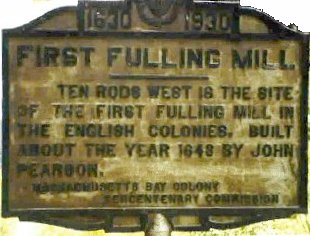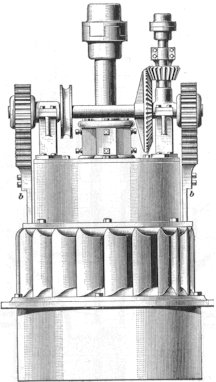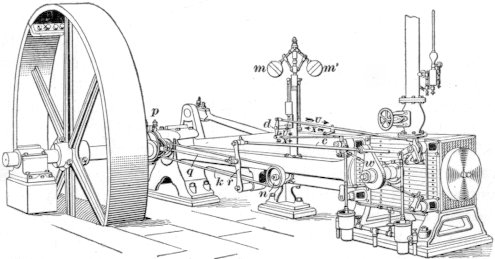Resisting Change
Today, we resist change. The University of Houston's College of Engineering presents this series about the machines that make our civilization run, and the people whose ingenuity created them.
![]() I have two books here: Volume eighteen of the modern McGraw-Hill Encyclopedia of Science and Technology has an eight-page article on textiles. The other, a large book from the 1906 International Library of Technology, is completely devoted to textiles.
I have two books here: Volume eighteen of the modern McGraw-Hill Encyclopedia of Science and Technology has an eight-page article on textiles. The other, a large book from the 1906 International Library of Technology, is completely devoted to textiles.
The technical term for this kind of a spool is a 'knitting yarn cop'Textiles dominated our industrial world a century ago. And this old book quite literally took me to a different planet -- one where craft and industry were still (may I say) interwoven.
The section on animal, vegetable and mineral yarns alone is 84 pages long -- mostly definitions. The word shoddy is the term for reprocessed wool. Shoddy fibers have been broken up, but they can be mixed with new wool to make a cheaper fabric. The section on mineral fibers recommends asbestos for fire-retarding fabric, and it calls glass fibers a curiosity with no application.
What catches my eye is the section on Mill Engineering. Here we watch as the authors, trying to enter the twentieth century, keep their allegiance to the nineteenth. They devote fifty-four pages to the old technologies of erecting the textile-mill building -- to footings and foundations, masonry, brickwork, and so forth.

 As for the power plant, they say flatly that two kinds of power might be used: steam engines or water power -- no mention of electric motors. Electric motors had been around for some time by then. They were now powering electric lighting systems, elevators, and trolley cars. The book does recommend light bulbs over other kinds of illumination. Yet it's clear that we're reading what practitioners of an old and conservative technology have to say.
As for the power plant, they say flatly that two kinds of power might be used: steam engines or water power -- no mention of electric motors. Electric motors had been around for some time by then. They were now powering electric lighting systems, elevators, and trolley cars. The book does recommend light bulbs over other kinds of illumination. Yet it's clear that we're reading what practitioners of an old and conservative technology have to say.
And this is one of the oldest technologies. We've made cloth for at least nine thousand years -- maybe much longer. Textiles were one of the first industries in North America. The Pilgrims set up a wool-fulling mill in Massachusetts only twenty-three years after they'd landed on Plymouth Rock. It was powered by a wooden water wheel.
Now this 1906 book includes a beautifully-illustrated twelve-page section on water power. It recommends metal water turbines of the mixed-flow Francis-type -- small turbines, which, like water wheels, were to serve individual mills along a river. The textile mills stayed in their old sites and simply replaced wooden water wheels with their more efficient cousins. Using the output of a large central power plant was not yet on anyone's radar screen.

When my wife and I fly East to see our children, we land in Manchester, New Hampshire. Near the airport the old textile mills line the Merrimack River. They sit (no longer used as mills) in their final form -- just as this old book describes them.
The most famous technical encyclopedia of all was Diderot's, published just before the French Revolution. The government called him a rebel, but he fell into the same trap. His section on textiles describes technologies about to be blown away by the Industrial Revolution. But then, no technical handbook has ever predicted the future. That, after all, is not for us to know.
I'm John Lienhard, at the University of Houston, where we're interested in the way inventive minds work.
(Theme music)
McGraw-Hill Encyclopedia of Science and Technology. 7th ed., Vol. 18, New York: McGraw-Hill Inc., 1992, pp. 259-268 (Authors are named for each of the component sections).
Yarns, Cloth Rooms, Mill Engineering, Reeling and Baling, Winding. International Library of Technology: A Series of Textbooks for Persons Engaged in ... Scranton: International Textbook Co., 1906. (No authors are named. The five articles are all dated either 1902 or 1905.)

A flyball-controlled Corliss-type steam engine